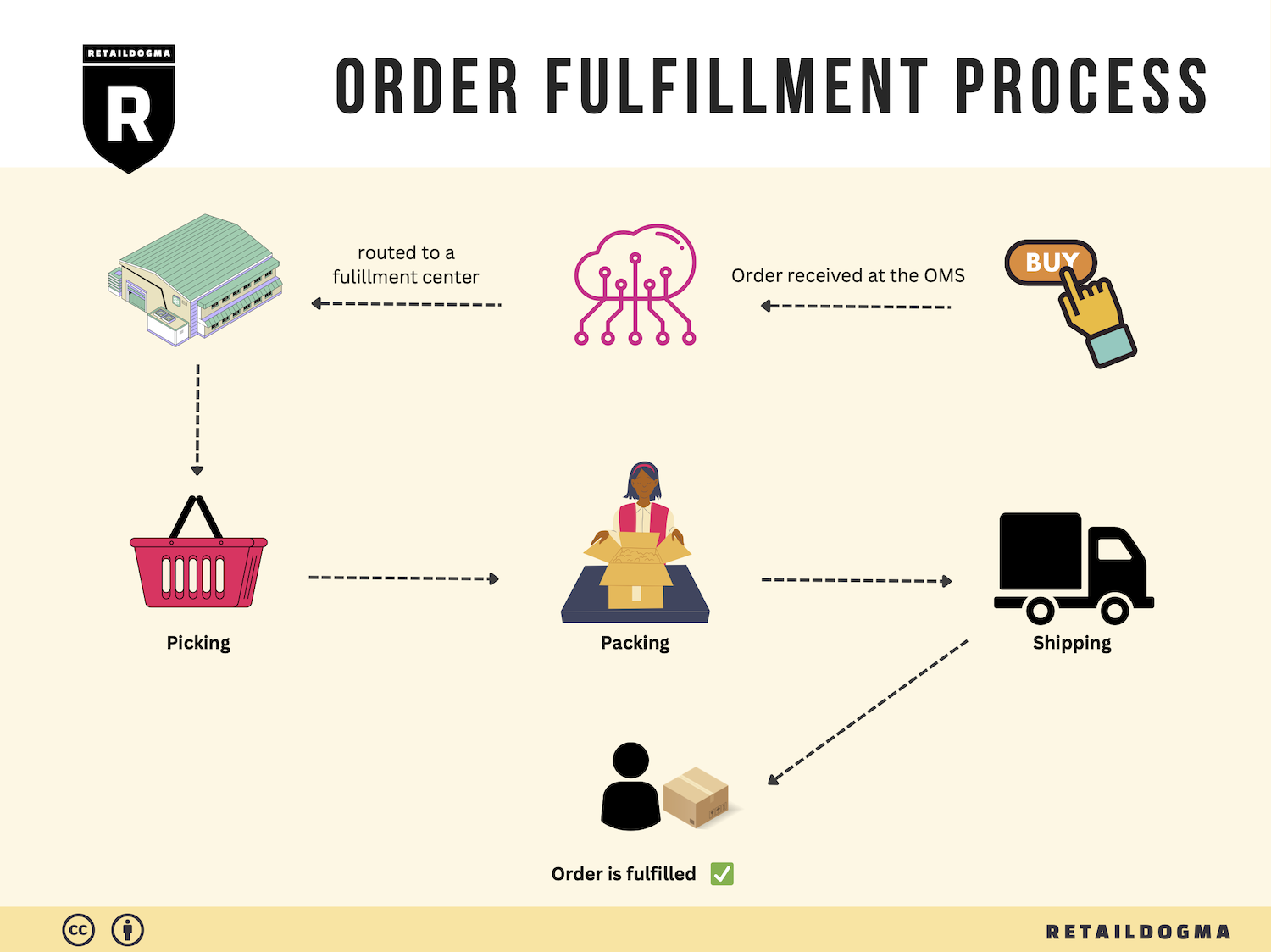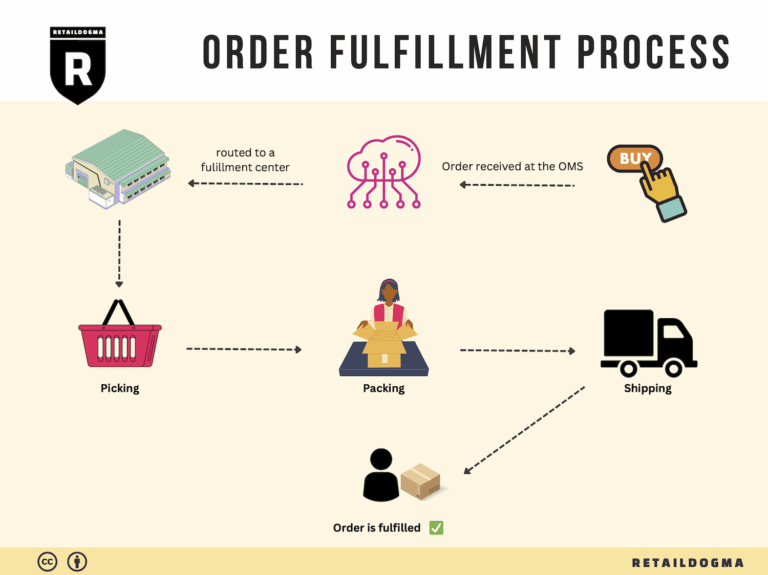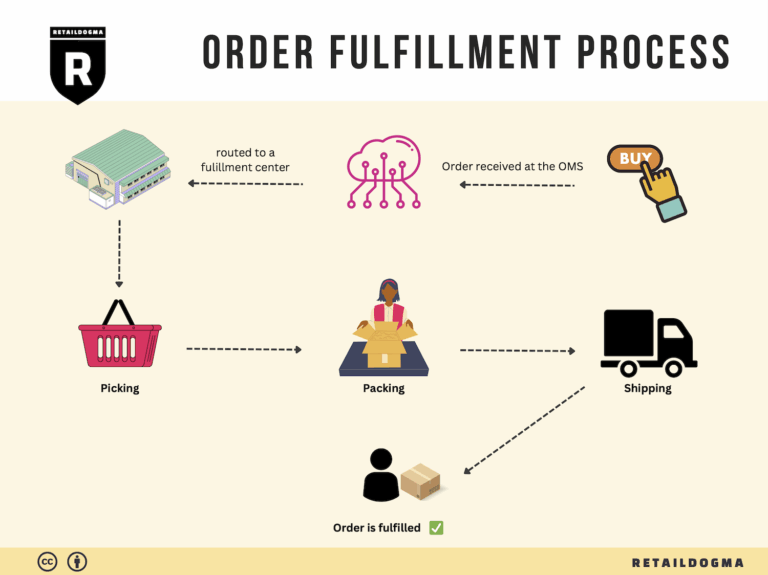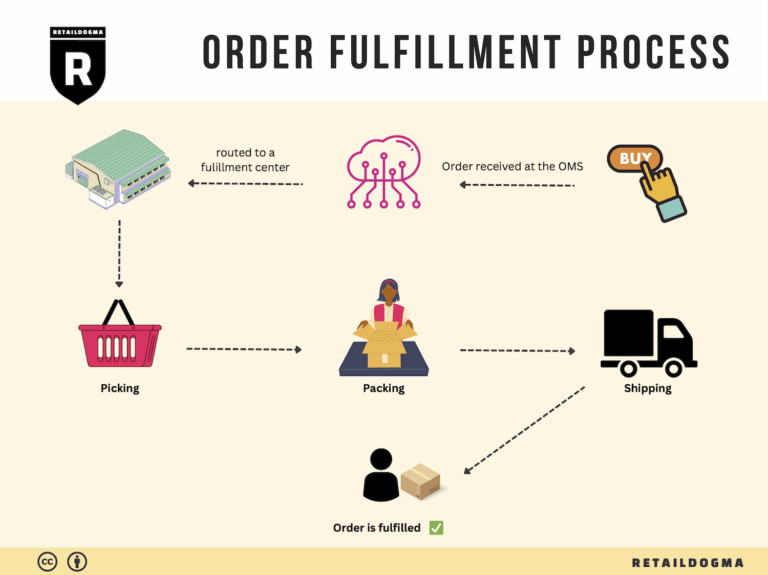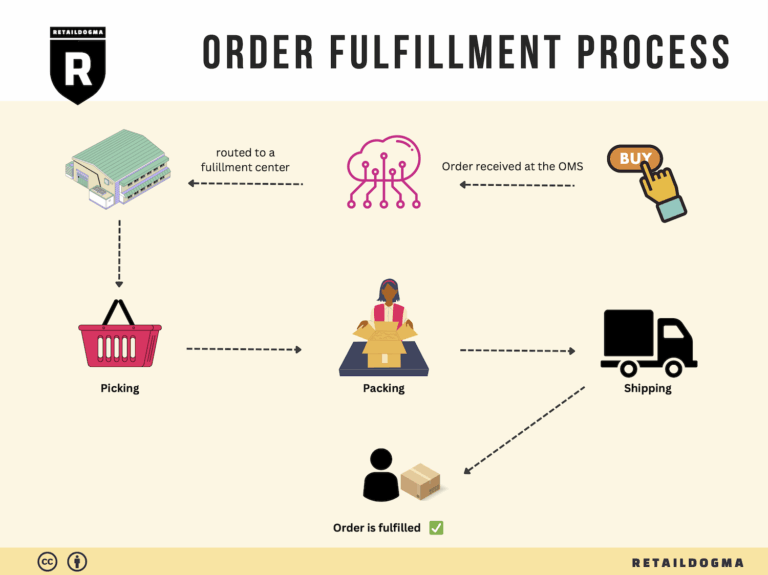How Order Fulfillment Works: A Step-by-Step Guide for Businesses
What is E-commerce Fulfillment? An Introduction for Growing Businesses
Understanding E-commerce Fulfillment
For many growing e-commerce businesses, the excitement of scaling sales can quickly turn into the stress of managing logistics. As orders begin to pour in, the once manageable tasks of packing and shipping can feel overwhelming. This common pain point often leads entrepreneurs to question how they can efficiently and effectively deliver products to their customers without sacrificing quality or service.
At its core, e-commerce fulfillment is the process of getting a product from your inventory to the customer’s doorstep. This involves several key steps, including receiving, storing, picking, packing, and shipping orders. As your business expands, understanding the intricacies of fulfillment becomes critical. The right fulfillment strategy can enhance customer satisfaction, improve operational efficiency, and ultimately drive growth.
This guide aims to demystify the various e-commerce fulfillment models available to businesses today. We will explore popular options such as Third-Party Logistics (3PL) providers and Fulfillment by Amazon (FBA), each offering distinct advantages that can cater to different business needs. Understanding these models is essential for making informed decisions about your logistics strategy.
Moreover, we will delve into the core services offered by fulfillment partners, which typically include inventory management, order processing, and shipping logistics. Knowing what services to expect can help you identify a partner that aligns with your business goals.
Choosing the right fulfillment partner is another critical aspect that this guide will cover. Factors such as location, technology integration, scalability, and customer service should all influence your decision. A well-chosen partner can not only streamline your operations but also enhance your brand’s reputation.
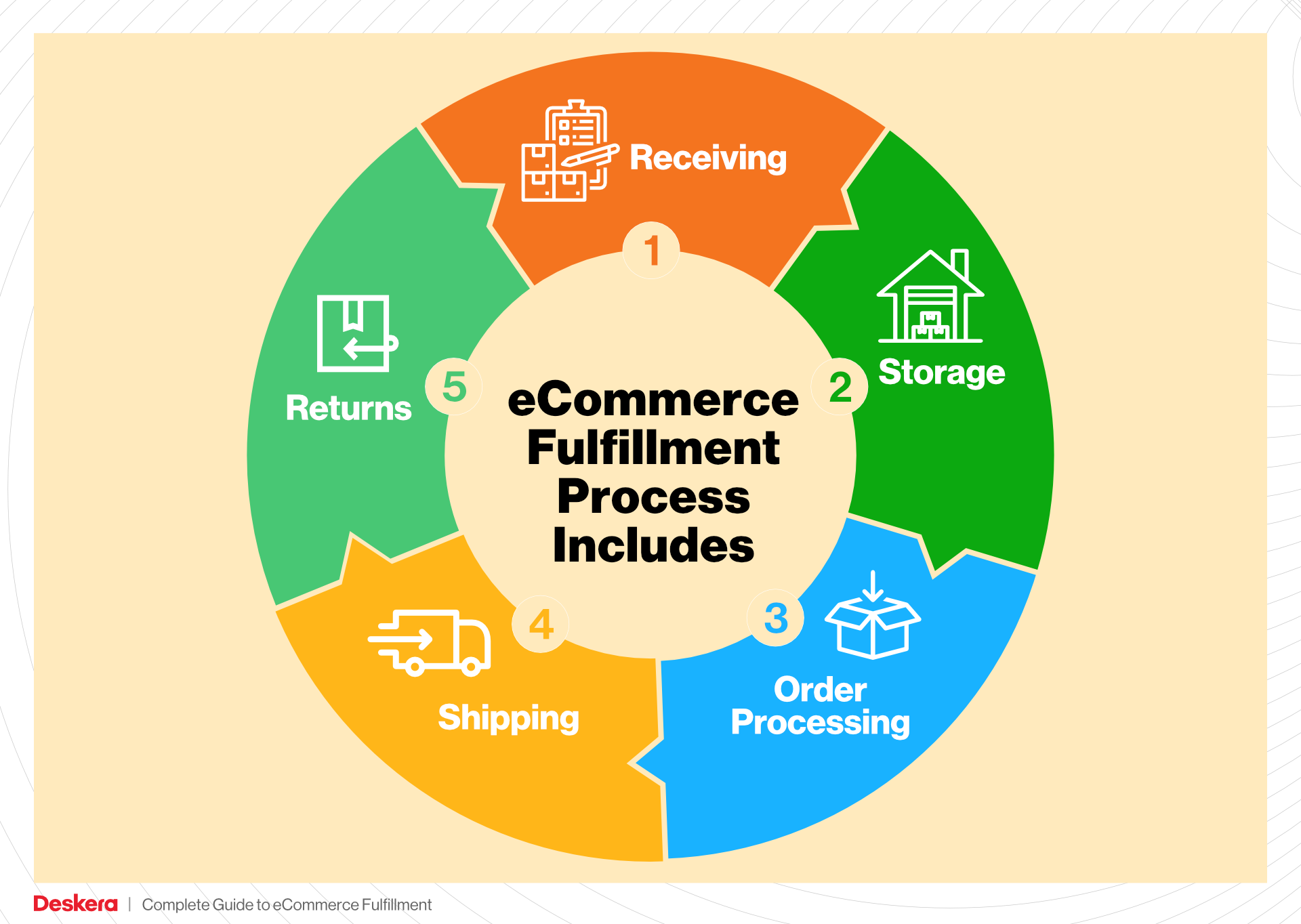
Pricing is often a concern for businesses as they evaluate fulfillment options. We will break down the typical cost structures and provide insights on how to effectively budget for fulfillment services, ensuring that you can scale without compromising your bottom line.
Ultimately, the goal of this guide is to empower e-commerce businesses to make smart, strategic decisions about their logistics. By providing a clear understanding of fulfillment processes and options, we aim to help you navigate the complexities of e-commerce logistics with confidence, allowing you to focus on what you do best: growing your business.
What You’ll Learn In This Guide
- What is E-commerce Fulfillment? An Introduction for Growing Businesses
- The Order Fulfillment Process: From ‘Buy’ Button to Customer’s Door
- Comparing Fulfillment Models: In-House vs. 3PL vs. Dropshipping
- A Deep Dive into Amazon FBA: Pros, Cons, and Who It’s For
- Core Services Offered by Fulfillment Centers
- How to Choose a Fulfillment Partner: A 6-Point Checklist
- Understanding Fulfillment Pricing: A Breakdown of Common Fees
- Frequently Asked Questions (FAQs) about Fulfillment
- Conclusion: Is Outsourcing Fulfillment the Right Move for Your Business?
- Important Disclaimer
The Order Fulfillment Process: From ‘Buy’ Button to Customer’s Door
1. Receiving Inventory
The order fulfillment process begins with receiving inventory at the fulfillment center. This is where products from suppliers or manufacturers arrive and are checked against purchase orders for accuracy. The key term associated with this step is SKU (Stock Keeping Unit), which uniquely identifies each product and allows for effective tracking throughout the supply chain.
Why is this step important? Accurate receiving ensures that the right products are accounted for and reduces discrepancies that could lead to stockouts or overstocking. Any errors in this phase can ripple through the entire fulfillment process, leading to delays and customer dissatisfaction. Efficient inventory management practices, such as using barcode scanning technology, can streamline this step, enhancing accuracy and efficiency.
2. Warehouse Storage
Once the inventory is received, the next step is warehouse storage. Products are organized and stored in designated areas within the fulfillment center. This is crucial for maintaining an efficient picking process later on. The key term here is slotting, which refers to the strategic placement of products based on their size, weight, and picking frequency to optimize space and accessibility.
Effective warehouse storage practices not only help in maximizing space but also reduce the time taken to locate and retrieve items. For instance, fast-moving items should be stored closer to packing stations to facilitate quicker access. Implementing a robust warehouse management system (WMS) can assist in tracking inventory levels and locations, ensuring that stock is readily available when orders come in.
3. Order Picking
Order picking is the process of retrieving items from their storage locations to fulfill customer orders. When a customer places an order, a pick list is generated, detailing the items to be collected, their locations, and quantities. This step is critical as it directly impacts order accuracy and speed.

Why is order picking important? Efficient picking methods can significantly reduce the time it takes to fulfill an order. There are various picking strategies—such as single order picking, batch picking, and zone picking—that businesses can implement based on their volume and order complexity. Automation technologies, like robotic pickers, can further enhance productivity and reduce labor costs in high-volume environments, such as those found in Amazon fulfillment centers.
4. Order Packing
After items are picked, they move to the packing stage. Here, products are securely packaged to ensure they arrive at the customer’s doorstep in pristine condition. The key term in this phase is packaging optimization, which involves using the right materials and box sizes to minimize damage and shipping costs.
Packing is vital as it not only protects the products but also influences customer satisfaction and brand perception. A well-packaged order can enhance the unboxing experience, while poor packaging can lead to returns and negative reviews. Implementing packing stations equipped with the necessary tools and technology can streamline this process, ensuring that orders are packed efficiently and correctly.
5. Shipping & Delivery
The final step in the order fulfillment process is shipping and delivery. Once packed, orders are labeled and prepared for shipment. They are then handed over to shipping carriers, such as UPS, FedEx, or USPS, depending on the service level selected by the customer. The key term here is last-mile delivery, which refers to the final leg of the shipping journey from a distribution center to the customer’s door.
This step is crucial because it directly affects delivery speed and customer satisfaction. Efficient last-mile delivery strategies can enhance the overall customer experience by ensuring timely and reliable delivery. Businesses can leverage data analytics to optimize delivery routes and schedules, reducing transit times and costs. Additionally, providing customers with tracking information can enhance transparency and trust in the fulfillment process.
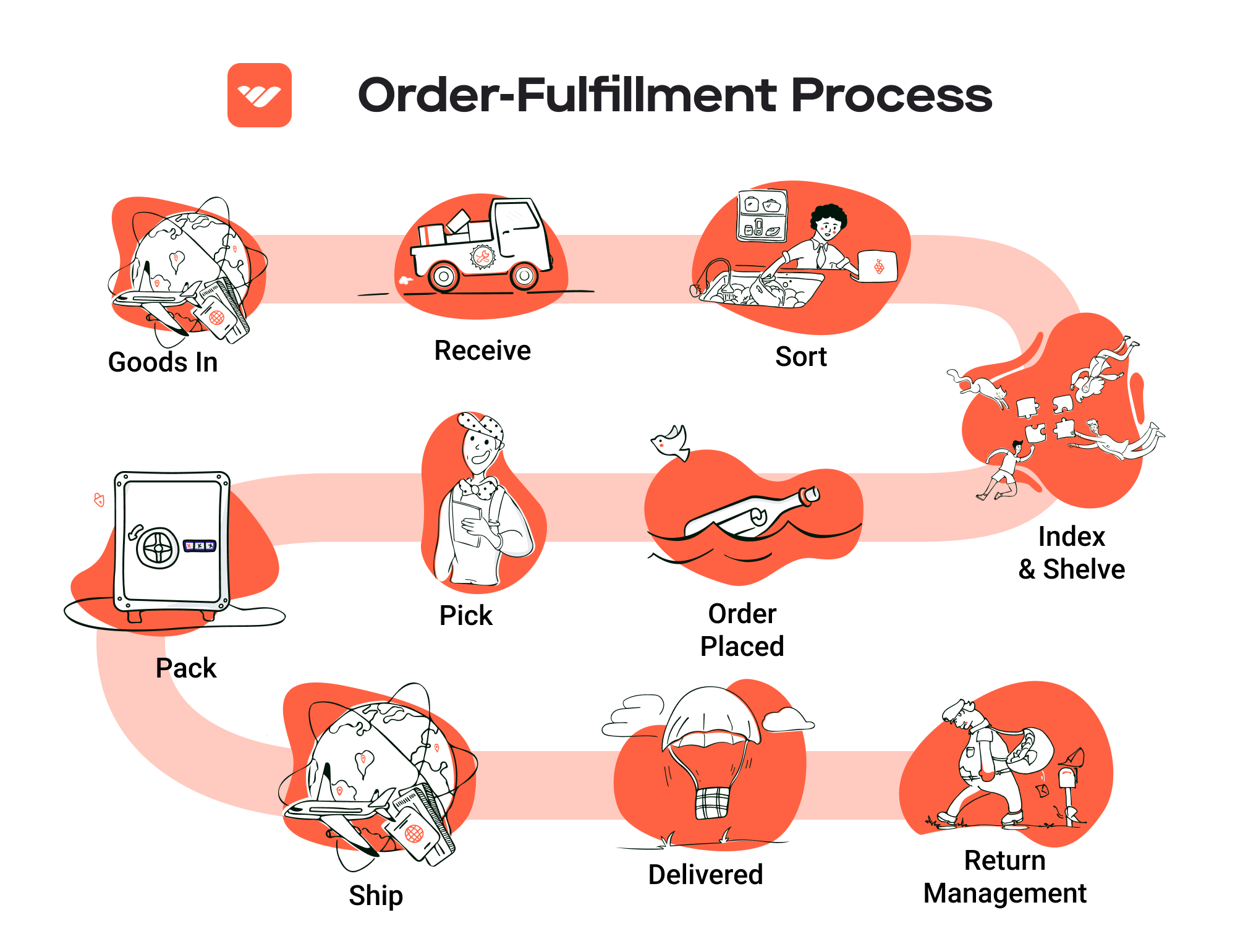
In summary, the order fulfillment process involves a series of interconnected steps that are critical for delivering customer satisfaction. By understanding and optimizing each phase—from receiving inventory to shipping and delivery—e-commerce businesses can streamline their operations, reduce costs, and ultimately scale their logistics effectively.
Comparing Fulfillment Models: In-House vs. 3PL vs. Dropshipping
Fulfillment Model Comparison Table
| Model | Who Handles Inventory | Best For (Business Stage) | Key Advantage | Key Disadvantage |
|---|---|---|---|---|
| In-House Fulfillment | Business Owner | Startups to Established | Full control over inventory and processes | High upfront costs and labor-intensive |
| Third-Party Logistics (3PL) | 3PL Provider | Growth Stage | Scalability and cost-effectiveness | Less control over inventory management |
| Dropshipping | Supplier | Startups and Niche Sellers | Low overhead and no inventory risk | Lower profit margins and potential quality issues |
In-House Fulfillment
In-house fulfillment involves a business managing its inventory and shipping processes internally. This model is often favored by startups and established companies that want complete control over their operations. Businesses that opt for in-house fulfillment typically invest in warehousing space, staffing, and logistics technology. The primary advantage of this approach is the ability to maintain tight control over inventory, which enables businesses to ensure quality and consistency in their order fulfillment processes. Moreover, having direct oversight can enhance customer service since any issues can be addressed swiftly. However, the key disadvantage is the high upfront costs associated with warehousing, staffing, and technology investment, as well as the operational complexities that come with managing logistics internally. This model can also be labor-intensive, requiring dedicated staff for various roles, from inventory management to shipping.
Third-Party Logistics (3PL)
Third-party logistics (3PL) providers offer businesses an outsourced solution for their fulfillment needs. This model is ideal for companies in the growth stage that require scalability without the overhead of managing their own logistics. By partnering with a 3PL, businesses can leverage the provider’s expertise, technology, and established networks to handle inventory storage, order processing, and shipping. The key advantage of using a 3PL is the cost-effectiveness it brings; businesses can save on warehousing and labor costs while benefiting from the provider’s resources. Additionally, 3PLs often have advanced logistics systems that can optimize shipping processes, potentially leading to faster delivery times. However, businesses must be aware of the trade-offs, as outsourcing fulfillment means relinquishing some control over inventory management and customer service. There can also be challenges in communication and coordination with the 3PL, which can impact service levels if not managed effectively.
Dropshipping
Dropshipping is a fulfillment model where the retailer does not hold inventory but instead relies on suppliers to ship products directly to customers. This model is particularly appealing for startups and niche sellers, as it requires minimal upfront investment and eliminates the risks associated with unsold inventory. In dropshipping, businesses can offer a wide range of products without the need for significant storage space or inventory management. The primary advantage of this model is the low overhead costs and the flexibility it offers in terms of product selection and market testing. However, dropshipping comes with its own set of challenges. Profit margins can be lower compared to in-house fulfillment or 3PL, as suppliers typically charge higher prices for handling shipping. Additionally, businesses may face quality control issues, as they have limited oversight over the products being shipped, which can lead to customer dissatisfaction if products do not meet expectations.
Conclusion
Choosing the right fulfillment model is crucial for e-commerce businesses looking to scale effectively. Each model—whether in-house fulfillment, third-party logistics, or dropshipping—has its unique advantages and disadvantages. Business owners must consider their specific needs, resources, and growth objectives when deciding which fulfillment strategy to adopt. By understanding the nuances of each model, entrepreneurs can make informed decisions that align with their operational goals and customer satisfaction standards.
A Deep Dive into Amazon FBA: Pros, Cons, and Who It’s For
What is Fulfillment by Amazon (FBA)?
Fulfillment by Amazon (FBA) is a service provided by Amazon that allows businesses to store their products in Amazon’s fulfillment centers. This service enables sellers to leverage Amazon’s extensive logistics network, customer service, and shipping capabilities to fulfill orders for their products. When a customer places an order for a product fulfilled by FBA, Amazon takes care of storage, packaging, shipping, and even customer service, allowing sellers to focus on growing their business.
The process is straightforward: sellers send their products to Amazon’s fulfillment centers, where the items are stored until they are sold. When an order is placed, Amazon picks, packs, and ships the product directly to the customer, typically within two days for Prime members. In addition, FBA products are eligible for Amazon Prime, which can significantly enhance visibility and sales potential.
How FBA Works
-
Setting Up an Account: Sellers need to create a seller account on Amazon and enroll in the FBA program.
-
Preparing Products: Products must be properly labeled and packaged according to Amazon’s guidelines to ensure they are ready for fulfillment.
-
Shipping to Fulfillment Centers: Sellers ship their products to one or more of Amazon’s fulfillment centers. Amazon provides shipping labels and guidelines to streamline this process.
-
Storage and Inventory Management: Once products arrive at the fulfillment center, they are stored until sold. Sellers can monitor their inventory levels through the Amazon Seller Central dashboard.
-
Order Fulfillment: When a customer orders a product, Amazon takes over the fulfillment process. They pick the item from the shelf, pack it, and ship it to the customer, handling all aspects of logistics.
-
Customer Service and Returns: Amazon also manages customer service inquiries and return processing, which can save sellers time and effort.
Pros of Using FBA
Prime Eligibility
One of the most significant advantages of FBA is the eligibility for Amazon Prime. Products fulfilled by FBA are marked with the Prime logo, making them more attractive to the millions of Prime members who prefer fast shipping. This can lead to increased visibility and higher conversion rates.
Customer Trust
Amazon has built a strong reputation for reliability and customer service. By using FBA, sellers can benefit from this trust. Customers often feel more comfortable purchasing items that are fulfilled by Amazon due to their familiarity with Amazon’s return policies and customer service.
Multi-Channel Fulfillment
FBA can be utilized for orders from multiple sales channels, not just Amazon. Sellers can use FBA to fulfill orders from their own websites or other marketplaces, simplifying logistics and inventory management across platforms.
Scalable Operations
FBA allows businesses to scale their operations without the need for additional warehousing or staffing. As demand grows, sellers can increase their inventory in Amazon’s fulfillment centers without worrying about the logistics of storage and shipping.
Cons of Using FBA
High Fees
While FBA can provide significant benefits, it also comes with costs. Amazon charges various fees, including storage fees based on the amount of space your products occupy and fulfillment fees for each item sold. These fees can add up quickly, especially for low-margin products.
Strict Inventory Rules
Amazon has strict guidelines regarding inventory management. Sellers must ensure they comply with Amazon’s policies regarding inventory limits, product preparation, and labeling. Failing to meet these requirements can result in additional fees or even the suspension of selling privileges.
Commingling Risks
FBA uses a commingling system where products from different sellers are stored together. While this can streamline fulfillment, it also poses risks. If a customer receives a defective or damaged product that was commingled, it can lead to negative reviews for the seller, even if the seller’s products were not the source of the issue.
Limited Control Over Shipping
While Amazon handles logistics, sellers have limited control over shipping methods and times. This can be a disadvantage for businesses that wish to offer specific shipping options or customize the fulfillment experience.
Who is FBA Best For?
FBA is particularly beneficial for small to medium-sized e-commerce businesses that want to scale quickly without the overhead costs of managing warehousing and logistics. It is ideal for sellers who:
-
Sell High-Volume Products: Businesses with high sales volume can benefit from the efficiency and speed of Amazon’s fulfillment network, which can lead to increased sales and customer satisfaction.
-
Want to Reach a Broader Audience: Sellers looking to tap into Amazon’s vast customer base and those who wish to take advantage of the Prime membership’s visibility will find FBA advantageous.
-
Have Limited Resources: For entrepreneurs and small businesses that lack the infrastructure to manage order fulfillment, FBA provides a streamlined solution that allows them to focus on marketing and product development.
-
Sell Seasonal Products: FBA is also suitable for sellers with seasonal products, as it allows them to store inventory without the need for long-term warehousing, adjusting stock levels as demand fluctuates.
In conclusion, Fulfillment by Amazon offers a powerful solution for e-commerce businesses looking to enhance their logistics capabilities and reach a broader customer base. However, sellers must carefully consider the associated costs and requirements to determine if FBA aligns with their business goals. By weighing the pros and cons, businesses can make informed decisions on whether to leverage FBA as part of their growth strategy.
Core Services Offered by Fulfillment Centers
Inventory Management & Warehousing
Inventory management and warehousing are foundational services provided by fulfillment centers, especially critical for e-commerce businesses aiming to scale efficiently. This service involves storing products in a controlled environment where inventory levels can be monitored in real-time. Fulfillment centers employ sophisticated inventory management systems that track stock levels, manage reorders, and provide insights into sales trends.
Benefits:
– Optimized Space Utilization: Fulfillment centers maximize warehouse space through strategic layout designs and inventory categorization. This optimization reduces overhead costs associated with excess storage.
– Real-Time Data Access: E-commerce businesses gain access to up-to-date inventory data, allowing for informed decision-making regarding restocking and order fulfillment.
– Reduced Risk of Stockouts or Overstocks: With accurate inventory tracking, businesses can avoid the pitfalls of stockouts, which lead to lost sales, and overstocks, which tie up capital.
Pick and Pack Services
Pick and pack services refer to the process of selecting items from the warehouse and packaging them for shipment. Fulfillment centers streamline this process using advanced technologies and trained personnel to ensure efficiency and accuracy. When an order is placed, the fulfillment center quickly locates the items, picks them, and then packs them appropriately for shipping.
Benefits:
– Speed and Efficiency: Automated systems and trained staff enable rapid order processing, which is crucial for meeting customer expectations, particularly for those utilizing services like Amazon Prime.
– Accuracy: With established protocols and technologies like barcode scanning, fulfillment centers minimize errors in order fulfillment, reducing the likelihood of returns and enhancing customer satisfaction.
– Scalability: As e-commerce sales grow, fulfillment centers can easily scale their pick and pack operations to meet increased demand without the need for businesses to invest in additional resources.
Kitting and Assembly
Kitting and assembly services involve the grouping of multiple products into a single package or preparing products for final assembly before shipping. This service is particularly beneficial for businesses that offer bundled products or customized orders. Fulfillment centers can handle the complexities of assembling kits, such as gift sets or promotional packages, ensuring that they are ready for sale or shipment.
Benefits:
– Enhanced Product Offerings: By allowing businesses to create unique product bundles or kits, fulfillment centers enable e-commerce companies to differentiate themselves in a competitive market.
– Time Savings: Outsourcing kitting and assembly to a fulfillment center frees up internal resources, allowing businesses to focus on core competencies like marketing and customer service.
– Improved Customer Experience: Well-assembled kits can enhance the perceived value of products, leading to increased customer satisfaction and repeat purchases.
Returns Management (Reverse Logistics)
Returns management, often referred to as reverse logistics, is a critical service provided by fulfillment centers that ensures smooth handling of product returns. This process involves accepting returned items, inspecting them, restocking them if necessary, and managing any associated logistics. Effective returns management is essential for maintaining customer loyalty and satisfaction in the e-commerce space.
Benefits:
– Streamlined Process: Fulfillment centers employ systems to handle returns efficiently, minimizing the hassle for both the business and the customer. This can include automated return labels and tracking systems that keep customers informed about their return status.
– Data Insights: By analyzing return data, businesses can gain valuable insights into product performance, customer preferences, and potential issues, allowing them to make informed decisions about inventory and product offerings.
– Cost Reduction: An efficient returns management process reduces the costs associated with handling returns, including shipping and restocking fees, ultimately improving the bottom line for e-commerce businesses.
In summary, the core services offered by fulfillment centers—inventory management and warehousing, pick and pack services, kitting and assembly, and returns management—are essential for e-commerce businesses looking to scale. By leveraging these services, businesses can optimize their operations, enhance customer satisfaction, and ultimately drive growth in a competitive marketplace.
How to Choose a Fulfillment Partner: A 6-Point Checklist
Location & Warehouse Network
Importance:
The geographical location of your fulfillment partner’s warehouses can significantly affect shipping times and costs. A partner with strategically placed warehouses can help ensure faster delivery to your customers, which is critical for maintaining high satisfaction levels and reducing shipping expenses.
Questions to Ask:
– Where are your warehouses located in relation to our primary customer base?
– How many fulfillment centers do you operate, and are they expanding?
– What is your average shipping time to key regions?
– Can you provide access to real-time tracking for shipments?
Technology & Integrations
Importance:
In today’s fast-paced e-commerce environment, leveraging advanced technology is essential for efficiency. Your fulfillment partner should offer robust technology solutions that integrate seamlessly with your existing systems, such as your e-commerce platform and inventory management tools.
Questions to Ask:
– What technology do you use for inventory management and order processing?
– Can your system integrate with our existing e-commerce platform (e.g., Shopify, WooCommerce)?
– Do you offer real-time inventory tracking and reporting?
– How do you handle system outages or technical issues?
Specializations (e.g., Cold Storage, Oversized Items)
Importance:
Not all fulfillment centers are equipped to handle every type of product. If your business deals with specialized items—like perishable goods requiring cold storage, or oversized items like furniture—it’s crucial to partner with a fulfillment provider that has the necessary capabilities.
Questions to Ask:
– What types of products are you specialized in handling?
– Do you have facilities for cold storage or temperature-sensitive items?
– How do you handle oversized or heavy items?
– Can you accommodate seasonal spikes in product demand?
Scalability & Capacity
Importance:
As your business grows, your fulfillment needs will evolve. A partner that can scale with you—whether that means adding more warehouse space, increasing staffing, or enhancing technology—is essential for sustainable growth.
Questions to Ask:
– How do you manage peak seasons or sudden spikes in demand?
– What is your current capacity, and how do you plan to accommodate future growth?
– Can you provide case studies of how you’ve helped other clients scale?
– Are there limits on the number of SKUs or volume you can handle?
Pricing and Contracts
Importance:
Understanding the pricing structure and contract terms is vital to avoid unexpected costs that can eat into your profits. Transparency in pricing can also help you budget more effectively.
Questions to Ask:
– What is your pricing model (e.g., per order, storage fees, shipping costs)?
– Are there any hidden fees we should be aware of (e.g., setup fees, minimum order quantities)?
– Can you provide a detailed breakdown of costs?
– What are the terms of the contract, and are there options for flexibility?
Customer Support & Reviews
Importance:
Exceptional customer support is crucial for resolving issues quickly and effectively. Additionally, researching reviews and testimonials can provide insights into the partner’s reliability and service quality.
Questions to Ask:
– What type of customer support do you offer (e.g., dedicated account managers, 24/7 support)?
– How do you handle errors or shipping discrepancies?
– Can you provide references from current or past clients?
– What platforms or channels do you use for customer support (e.g., phone, chat, email)?
Conclusion
Choosing the right fulfillment partner is a critical decision that can impact your business’s efficiency and customer satisfaction. By systematically evaluating potential partners using this checklist, you can make an informed decision that aligns with your business goals and ensures scalability for future growth. Always remember to prioritize partners that align with your specific needs and values, as this can lead to a long-term, fruitful relationship.
Understanding Fulfillment Pricing: A Breakdown of Common Fees
Initial Setup Fees
Initial setup fees are the costs associated with onboarding your products into an Amazon fulfillment center. This fee typically includes the preparation and configuration of your account, as well as the physical setup of your inventory within the warehouse. The initial setup can range from a few hundred to several thousand dollars, depending on the complexity of your inventory and the level of service required.
These fees can cover:
– Account registration and configuration
– Inventory labeling and barcoding
– Initial storage setup and organization
To get an accurate estimate, businesses should provide detailed information about their inventory, including the number of SKUs and product dimensions, to receive a tailored quote.
Receiving Fees
Receiving fees are charged when your products arrive at the fulfillment center. This fee is applied per unit and covers the costs of unloading, inspecting, and storing your inventory. The receiving process ensures that all items are accounted for and meet quality standards before they are made available for sale.
Typically, receiving fees are calculated based on:
– The number of units received
– The condition and type of products (e.g., oversized items may incur higher fees)
To minimize receiving fees, e-commerce businesses should ensure that their shipments are well-organized and clearly labeled, facilitating a smoother intake process.
Storage Fees (per pallet/bin)
Storage fees are charged for the space your inventory occupies in the fulfillment center. These fees are typically calculated on a monthly basis, based on the volume of your products measured in cubic feet or per pallet/bin.
Storage fees can vary significantly depending on:
– The type of items stored (standard vs. oversized)
– The duration of storage (long-term storage fees may apply if items are held for more than a specified period)
To manage storage costs effectively, businesses should keep track of their inventory levels and rotate stock regularly to avoid long-term storage fees, which can be considerably higher.
Pick & Pack Fees (per item/order)
Pick and pack fees are incurred each time an order is processed. This fee covers the costs of selecting (picking) the items from storage and packing them for shipment. The structure of pick and pack fees can vary, but they are generally charged per item or per order, depending on the fulfillment provider.
Factors influencing pick and pack fees include:
– The complexity of the order (multiple SKUs vs. single SKU)
– The type of packaging required (special handling or oversized packaging may increase fees)
To optimize pick and pack costs, businesses should consider consolidating orders and minimizing the number of SKUs in each shipment.
Shipping Fees
Shipping fees are the charges associated with delivering the package to the customer. These fees are influenced by several factors, including the destination, package weight, and shipping method selected (standard, expedited, etc.).
Shipping fees can be calculated based on:
– Weight and dimensions of the package
– Shipping distance (local vs. international)
– Service level chosen (e.g., standard vs. two-day shipping)
To gain better control over shipping costs, businesses should regularly review shipping options and negotiate rates with carriers. Utilizing Amazon’s partnered carrier program may also provide discounts.
Conclusion: Tips for Accurate Quotes
When seeking accurate quotes for fulfillment pricing, e-commerce businesses should keep the following tips in mind:
-
Provide Detailed Inventory Information: The more precise and comprehensive your product details (dimensions, weight, and SKU counts), the more accurate the quote will be.
-
Ask About All Possible Fees: Ensure you understand all potential fees associated with fulfillment, including those that may not be immediately obvious, such as long-term storage or special handling fees.
-
Compare Multiple Providers: Don’t settle for the first quote. Compare offers from different fulfillment centers to find the best fit for your needs.
-
Plan for Seasonal Fluctuations: Consider how seasonal sales might affect storage and shipping needs. Some providers offer discounts during off-peak times.
-
Negotiate Terms: Many fulfillment centers are open to negotiation, especially for larger volumes or long-term contracts. Be prepared to discuss your needs and explore customized solutions.
By understanding these common fulfillment pricing models and implementing these strategies, e-commerce businesses can better manage their logistics costs and improve their operational efficiency.
Frequently Asked Questions (FAQs) about Fulfillment
1. What is the Amazon Fulfillment Center HGR2?
The Amazon Fulfillment Center HGR2 is a state-of-the-art logistics facility located in Hagerstown, Maryland. Spanning over 1 million square feet, it specializes in storing, picking, packing, and shipping larger items such as furniture, exercise equipment, and outdoor gear. This center is part of Amazon’s extensive network of fulfillment centers designed to enhance delivery efficiency and customer satisfaction.
2. How does HGR2 fit into Amazon’s logistics network?
HGR2 is strategically positioned within Amazon’s logistics network to serve high-demand areas, allowing for quicker delivery times to customers. It operates alongside other fulfillment centers in the region, leveraging Amazon’s advanced technology and processes to optimize order fulfillment and reduce shipping times, particularly for Prime members.
3. What types of products are stored and shipped from HGR2?
HGR2 primarily handles larger customer items, including mattresses, kayaks, grills, and fitness equipment. Its specialized design accommodates the storage and handling of bulky goods that require different logistics considerations compared to standard-sized items.
4. What are the benefits of using Amazon Fulfillment Centers like HGR2?
Utilizing Amazon Fulfillment Centers allows e-commerce businesses to take advantage of Amazon’s vast logistics infrastructure. This includes access to faster shipping options, customer service support, and the ability to reach a broader customer base through Amazon’s platform. Additionally, sellers can benefit from Amazon Prime’s two-day shipping for eligible products, enhancing customer satisfaction and potentially increasing sales.
5. What is the difference between a warehouse and a fulfillment center?
A warehouse primarily focuses on storing inventory, while a fulfillment center is designed for processing and fulfilling customer orders. Fulfillment centers incorporate advanced technology and processes to pick, pack, and ship products directly to customers efficiently. They often provide additional services such as returns processing and inventory management.
6. What is a 3PL (Third-Party Logistics) provider?
A 3PL is a company that provides outsourced logistics services to businesses. These services can include transportation, warehousing, inventory management, and order fulfillment. By partnering with a 3PL, businesses can focus on their core operations while leveraging the expertise and resources of logistics professionals.
7. How much do fulfillment services cost?
The cost of fulfillment services varies widely based on factors such as order volume, storage space, item size, and additional services required (like packaging and returns). Generally, fees may include storage fees, picking and packing fees, and shipping costs. Businesses should conduct a cost analysis to determine the most economical fulfillment solution based on their specific needs.
8. How can businesses benefit from using the HGR2 fulfillment center?
Businesses can benefit from using HGR2 by leveraging Amazon’s advanced logistics capabilities to enhance their distribution efficiency. This includes faster shipping times, reduced operational burdens, and improved customer satisfaction through reliable delivery services. Additionally, businesses can gain access to Amazon’s extensive customer base and marketing tools.
9. What technologies are utilized in Amazon Fulfillment Centers?
Amazon Fulfillment Centers, including HGR2, employ cutting-edge technologies such as robotics, machine learning, and automated sorting systems. These technologies streamline the picking and packing processes, improve inventory management, and enhance overall operational efficiency, allowing for quicker turnaround times for customer orders.
10. How do I get started with using HGR2 for my e-commerce business?
To start using HGR2 for your e-commerce business, you need to enroll in Amazon’s Fulfillment by Amazon (FBA) program. After setting up your seller account, you can ship your products to the HGR2 facility, where Amazon will handle storage, order processing, and shipping. Make sure to familiarize yourself with Amazon’s guidelines and best practices for optimizing your listings and leveraging fulfillment services effectively.
Conclusion: Is Outsourcing Fulfillment the Right Move for Your Business?
Weighing the Benefits of Outsourcing Fulfillment
Outsourcing fulfillment can be a transformative decision for e-commerce businesses looking to scale efficiently. The primary benefits include significant time savings, enhanced scalability, and access to specialized expertise. By delegating fulfillment operations to a third-party provider, businesses can redirect their focus toward core competencies, such as marketing, product development, and customer engagement. This shift not only improves operational efficiency but also allows for more strategic growth initiatives.
Scalability is another critical advantage. As your business grows, so do the complexities of order management and logistics. A capable fulfillment partner can easily adapt to fluctuating order volumes, ensuring that you can meet customer demand without the headaches associated with managing inventory and shipping logistics in-house. This flexibility is particularly valuable during peak seasons when demand can surge unexpectedly.
Moreover, partnering with an experienced fulfillment service means leveraging their expertise in logistics, technology, and customer service. These providers often have established relationships with shipping carriers and can negotiate better rates, ensuring that you remain competitive in pricing while delivering superior service to your customers.
However, it is essential to choose the right fulfillment partner that aligns with your business goals. Look for a provider that understands your market, offers advanced technology solutions, and has a proven track record of reliability and efficiency.
Take Action: Audit Your Current Shipping Process
As you consider the potential benefits of outsourcing fulfillment, take a moment to audit your current shipping process. Identify bottlenecks, inefficiencies, and areas where you could improve customer satisfaction. This analysis will help you determine if a fulfillment partner is the right next step for your business’s growth. Embrace the opportunity to scale effectively and position your business for future success.
Important Disclaimer
⚠️ Important Disclaimer
The information in this guide is for educational purposes. Fulfillment services, pricing, and platform features change frequently. Always conduct your own due diligence and consult with providers directly before making business decisions.
